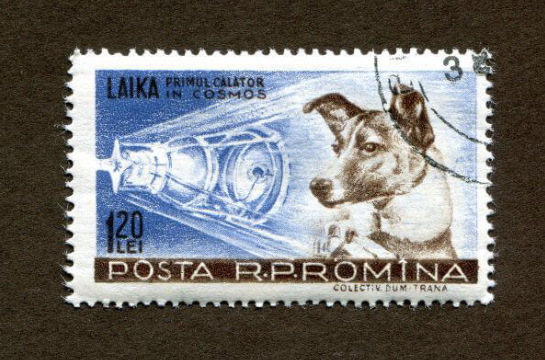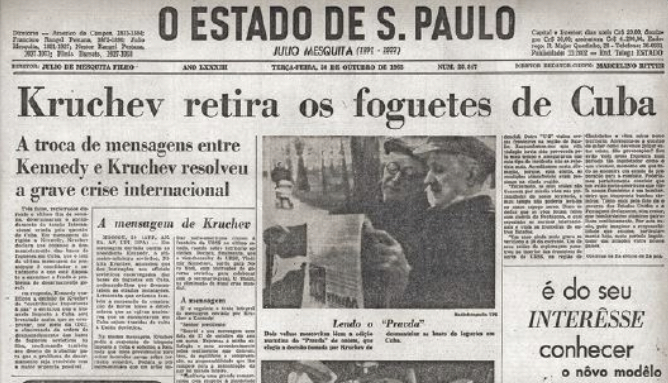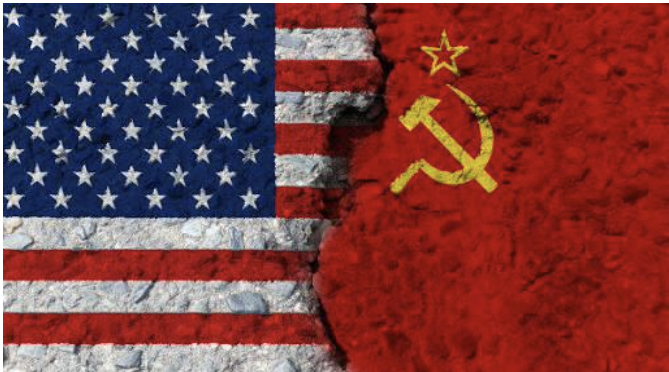Olá, galera! Tudo bem?
Hoje nós vamos falar sobre a Guerra Fria.
A Guerra Fria foi um cenário político ideológico ocorrido após a Segunda Guerra Mundial, durante os anos 1947-1991. Eram rivais nessa disputa, de um lado os EUA defendendo o capitalismo e de outro a URSS defendendo o socialismo. Apesar dessas duas potências não se enfrentarem diretamente, a busca por ampliar suas áreas de influência resultou em conflitos armados ao redor do mundo, por exemplo disputas diplomáticas, militares e econômicas.
O início da Guerra Fria foi causado pois EUA e URSS saíram como grandes potências da Segunda Guerra Mundial e, a partir daí, começaram a batalhar pela hegemonia mundial. Historiadores consideram que o conflito iniciou-se devido ao discurso realizado por Harry Truman, em 1947. Nesse discurso foi solicitado verba para combater o avanço do comunismo, o que deu início à Doutrina Truman, política que englobou uma série de medidas tomadas pelo governo norte americano.
Dentre as características da Guerra Fria destacou-se a corrida armamentista, disputa que envolvia as duas grandes nações para o desejo de mostrar sua grande força, sua invencibilidade e sua superioridade na questão bélica. Isso gerou o grande medo mundial de uma guerra atômica, pois as duas potências já tinham posse da bomba nuclear.
Nesse sentido, o momento de maior tensão no planeta foi a chamada “Crise do Mísseis em Cuba”. Os EUA descobriram que a URSS havia instalado bases de lançamento de mísseis na ilha socialista, apontados para o seu território. Ao mesmo tempo, havia mísseis norte-americanos na fronteira da Turquia, apontados para a URSS. Poderia ser o início de uma guerra com potencial destrutivo inimaginável. Felizmente as lideranças dos países conseguiram entrar em um acordo e a situação foi resolvida diplomaticamente.
Outra característica foi a corrida espacial, a qual foi resultado da disputa no âmbito científico. Uma grande disputa para desbravar o espaço sideral, que proporcionou grande desenvolvimento da tecnologia nesse campo. Durante a corrida espacial foi realizado expedições espaciais, e com isso o homem chegou à lua. Neil Armstrong, o primeiro homem a chegar à lua, declamou a frase tão famosa: “É um pequeno passo para [um] homem, um salto gigante para a humanidade”. A “conquista” espacial era algo de extrema importância na disputa entre americanos e soviéticos, pois o domínio desse novo lugar, o espaço, deixaria claro o papel de potência mundial daquele que conquistasse . E o domínio também proporciona uma vantagem para o lado que obtivesse a conquista , pois poderia observar seu oponente por satélites.
O primeiro passo na corrida espacial foi dado pelos soviéticos, com o satélite em órbita Sputnik 1, o qual deu início a corrida espacial. Permaneceu em órbita terrestre por 22 dias, e no período o satélite enviou sinais de rádio que foram fundamentais para o estudo do planeta. Os soviéticos tinham prazer de estar no topo, então um mês depois lançaram o Sputnik 2, e com um ser vivo. A cadelinha Laika foi enviada ao espaço e infelizmente veio a falecer, em razão do superaquecimento do satélite, após 10 dias do lançamento. E no dia dia 14 de abril de 1958 o satélite veio a explodir. Porém tempo depois foi lançado o Sputnik 10, que igual ao Sputnik 2, enviou uma cadelinha, mas felizmente ela voltou com segurança a Terra.


Então foi isso galera esperamos que tenham gostado, até mais.
Cold War
Hi guys today we will talk about the Cold War.
The Cold War was an ideological political scenario that occurred after World War II, during the years 1947-1991. They were rivals in this dispute, on the one hand the US defending capitalism and on the other the USSR defending socialism. Although these two powers did not directly face each other, the quest to expand their areas of influence has resulted in armed conflicts around the world, for example diplomatic, military and economic disputes.
The beginning of the Cold War was caused as the US and USSR emerged as major powers of World War II and, from there, they began to battle for world hegemony. Historians consider that the conflict began due to Harry Truman’s speech, in 1947. In this speech, funds were requested to combat the advance of communism, which initiated the Truman Doctrine, policy that encompassed a series of measures taken by the U.S. government.
As the characteristics of the Cold War stood out the arms race, a dispute that involved the two great nations for the desire to show their great strength, their invincibility and their superiority in the war matter. This generated the great worldwide fear of an atomic war, because the two powers already had possession of the nuclear bomb.
In this sense, the moment of greatest tension on the planet was the so-called “Cuban Missile Crisis”. The US discovered that the USSR had installed missile launch bases on the socialist island, aimed at its territory. At the same time, there were American missiles on the Turkish border, aimed at the USSR. It could be the beginning of a war with unimaginable destructive potential. Fortunately the leaders of the countries managed to enter into an agreement and the situation was resolved diplomatically.
Another characteristic was the space race, which was the result of the dispute in the scientific sphere. A great dispute to explore outer space, which provided great development of technology in this field. During the space race space expeditions were carried out, and with that man reached the moon. Neil Armstrong the first man on the moon decried the famous phrase “It’s a small step for [a] man, a giant leap for humanity.” The spatial “conquest” was something of the utmost importance in the dispute between Americans and Soviets, because the dominance of this new place, the space, would make clear the role of world power of the one who conquered.
And the domain also provides an advantage for the side that obtained the conquest, because it could observe its opponent by satellites.
The first step in the space race was taken by the Soviets, with the satellite orbiting Sputnik 1, which started the space race. It remained in Earth orbit for 22 days, and in the period the satellite sent radio signals that were fundamental to the study of the planet. The Soviets were pleased to be at the top, so a month later they launched Sputnik 2, and with a living being. The puppy Laika was sent into space and unfortunately died, due to the overheating of the satellite, 10 days after launch. And on April 14, 1958, the satellite exploded. But then Sputnik 10 was released, which equals Sputnik 2, sent a small cade, but fortunately she returned safely to Earth.
So that’s it, guys, we hope you enjoyed it, even more.
By: Izabela Cray, Flavia Scharan, Giovana Gruzska, Sabrina Mialski, Pedro Cavalcante, Nagib Colaça, Lucas Tramontim

